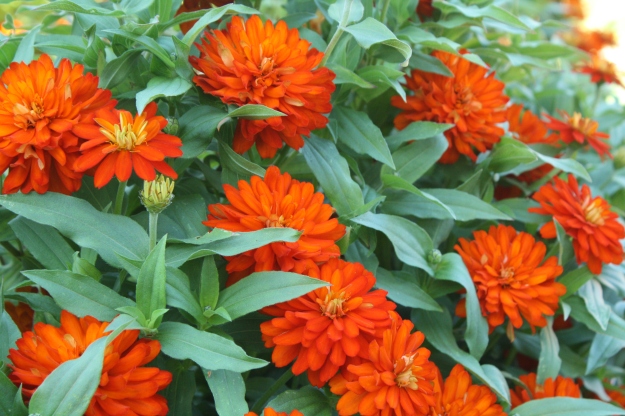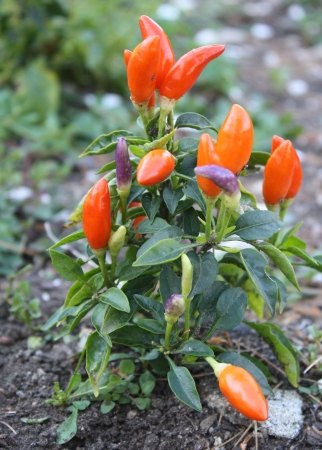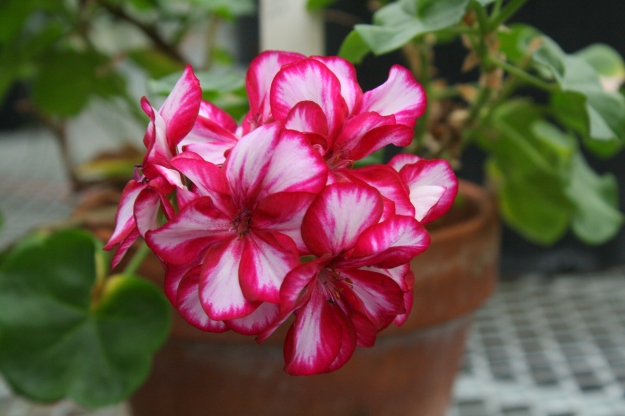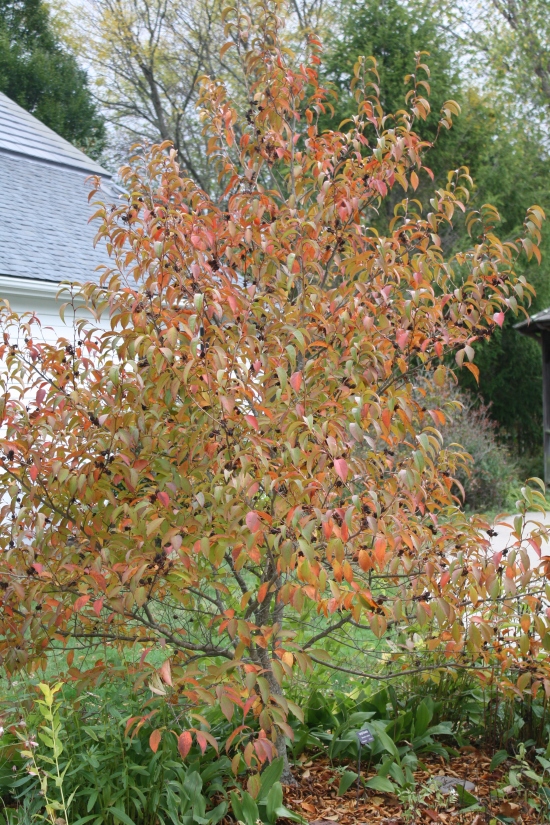Thanksgiving Holiday

It’s only Tuesday, but I am looking ahead to Thanksgiving on Thursday, my favorite holiday! Being with family and friends to celebrate and be thankful for all that we have seems like the best kind of day. Tomorrow we bake pies (lots) and Thursday we have very traditional turkey, mashed potatoes and gravy, and cranberry sauce. It’s our stay-at-home holiday, and not traveling –especially this year, with predictions of bad weather for Wednesday– make it a leisurely day. A long walk after dinner, and maybe a game of Scrabble or Seven Wonders as night falls.
Just as I always talk about my favorite holiday in this post, I also take the opportunity to let you know about the annual Buy Nothing Day and, in Rhode Island, Winter Coat Exchange on Friday. Buy Nothing Day is an international day of protest against rampant, out- of- control consumerism. As Scott MacKay, Rhode Island journalist and historian says:
“The coming of a New England winter reminds us once again that poor Rhode Islanders face a tougher time than the better-off. So once again it is time for us to search those closets for old winter coats to donate to the annual Rhode Island Buy Nothing Day Winter Coat Exchange. The brainchild of community activist and environmentalist Greg Gerritt, the coat exchange will be held on the Black Friday shopping day, the day after Thanksgiving. The main site will be at the founding location, on the State House lawn in Providence, which is located in the shadow of both the Independent Man and the Providence Place Mall.
‘Buy Nothing Day is the international day to point out how consumerism is destroying our planet and our communities. We collect and giveaway winter coats to give back to the community while pointing out how consumerism is a dead end,’ says Gerritt,”
Coat collection and giveaway runs from 9 a.m. until 1 p.m. on Nov. 28 on the State House Lawn. In South County, coats will be gathered and given away at St. Francis Church, 114 High Street, Wakefield, between 10 a.m. and noon on Nov. 28. For more info contact Tom Abbott at dawgdays@cox.net or call 401-364-0778. There are many other locations around the state to donate coats or pick them up; the list is here: Winter Coat Exchange
From the URI Botanical Gardens and your grateful gardener, I wish you Safe Travels and a Happy Thanksgiving with those you love!
Not Ready!
 Well, a little bit ready for winter, as in: prepared. The gardens are mostly cut back, although the Dahlias still need to be dug up and packed away. There’s plenty of wood in the wood shed. Pulled out my winter coat, hat, and mittens. But ready for a couple more months of cold and dark? No.
Well, a little bit ready for winter, as in: prepared. The gardens are mostly cut back, although the Dahlias still need to be dug up and packed away. There’s plenty of wood in the wood shed. Pulled out my winter coat, hat, and mittens. But ready for a couple more months of cold and dark? No.


 What are you doing to get ready for winter?
What are you doing to get ready for winter?
Edible Garden
 Hard frost came to my home garden in the wee hours of Monday morning. Here at the top of Kingston Hill, the Botanical Garden had none to speak of, but the plants are looking pretty tired. Lack of rain, deer, woodchucks, and rabbits took their toll this year! Wide swaths of Phlox and Chelone were eaten to little nubs, then eaten again. Hostas disappeared early on. Echinacea has become a wildlife delicacy. Annuals were lunch as soon as they were set out. There are a few bright spots: Japanese Anemones (eaten and recovered), Dahlias (near the road= not eaten), Toad Lilies (also eaten and recovered), Ornamental Peppers (untouched!), Callicarpa, and of course, beautiful fall foliage.
Hard frost came to my home garden in the wee hours of Monday morning. Here at the top of Kingston Hill, the Botanical Garden had none to speak of, but the plants are looking pretty tired. Lack of rain, deer, woodchucks, and rabbits took their toll this year! Wide swaths of Phlox and Chelone were eaten to little nubs, then eaten again. Hostas disappeared early on. Echinacea has become a wildlife delicacy. Annuals were lunch as soon as they were set out. There are a few bright spots: Japanese Anemones (eaten and recovered), Dahlias (near the road= not eaten), Toad Lilies (also eaten and recovered), Ornamental Peppers (untouched!), Callicarpa, and of course, beautiful fall foliage.
Oh, and last but not least: Gaillardia, in the All-America Selections Display Garden. These little plants fly under the radar at the annual Plant Sale, but they can’t be beat. They are perennials blooming first year from seed (started April 1st), withstand heat, drought, animals, and insects. October 21 –still blooming! Save a garden spot for them in the spring.
Real Rain
That’s what everybody here is walking around saying, with a smile and a grateful look at the gray skies. Yes, it’s been quite a while. I like having a rain day to focus on the greenhouse, dividing and potting up plants, rearranging, cleaning up, and taking cuttings. Here are some greenhouse plants which caught my eye today.
September Sights
Abundant
By my way of looking at it, this is a pretty good growing year. After a long cold spring, most of the summer has brought great weather. Not too hot or humid, just warm, sunny, and pleasant, with cool nights — a reminder of why in the days before air-conditioning, people would come north to New England for the summer. The soil is dry now, and a rainy day or two would be good, but still, I’ll take it! So many things have grown so well this season (and it’s not QUITE over!) that I wanted to share a few.
 Orange flowers and vegetables are everywhere this year!
Orange flowers and vegetables are everywhere this year!


 Mostly I like them, some, well, with so many great petunias to choose from, why would you plant this one:
Mostly I like them, some, well, with so many great petunias to choose from, why would you plant this one: But on to other abundant things!
But on to other abundant things!
More raspberries (almost) than I could put up, in my home garden.
 A second cutting of hay in South County:
A second cutting of hay in South County:
 Hornet’s nests, big and beautiful in their own way:
Hornet’s nests, big and beautiful in their own way:

 Flowers and fruit of all kinds.
Flowers and fruit of all kinds.
Did something grow really well for you this year? I’d love to hear about it!
Beautiful Flowers
Into July
It’s been quite a while since the last post! With the weather fine and dry through most of June, we spent all our days out in the garden. Now it’s hot and humid, with a tropical storm predicted for Independence Day. It seems early for hurricanes*, but hey, I’m not a meteorologist, I’m a gardener. And so, here are pictures of the garden. Lots of color as we head into full summer!
* Hurricane Rhyme…… “June: too soon, July: stand by, August: upon us, September: remember, October: all over.”
Either a “mariner’s proverb”, or a “Carribean folk saying”, reportedly first published in “Weather Lore” by R. Inwards in 1898.
Why We Love Rhododendrons
 An early explorer of Narragansett Bay, Giovanni da Verrazzano, saw the islands covered with Rhododendrons and was reminded of the Mediterranean Isle of Rhodes… or so goes one of our beloved mythologies of how our little state came to be named Rhode Island. Another story says that Adrian Block, a Dutch explorer for whom Block Island is named, referred to a “red island” in Narragansett Bay, Roodt Eylant in Dutch. Either way, we love Rhododendrons.
An early explorer of Narragansett Bay, Giovanni da Verrazzano, saw the islands covered with Rhododendrons and was reminded of the Mediterranean Isle of Rhodes… or so goes one of our beloved mythologies of how our little state came to be named Rhode Island. Another story says that Adrian Block, a Dutch explorer for whom Block Island is named, referred to a “red island” in Narragansett Bay, Roodt Eylant in Dutch. Either way, we love Rhododendrons.
 There are native Rhododendrons, R. maximum, in the understory of wooded areas all over the state. Tales are told that these groves of Rhododendrons were so big in colonial times that a person could become lost in them! The Ell and Long Pond area in Hopkinton has huge Rhodies which give a hint of this possibility.
There are native Rhododendrons, R. maximum, in the understory of wooded areas all over the state. Tales are told that these groves of Rhododendrons were so big in colonial times that a person could become lost in them! The Ell and Long Pond area in Hopkinton has huge Rhodies which give a hint of this possibility.
The cultivated Rhododendrons are also very much at home in our maritime climate. They thrive here, for the most part, and are widely planted as ornamentals. Their incredible tropical flowers are a big part of the late spring/early summer landscape, and I love seeing them as we approach the longest days of the year.
 Rhodies come in a wide spectrum of colors. There are probably thousands of different pinks, along with whites of every variety, and purples from light to dark and approaching blue. There are some warm tones, like the deep red ‘Francesca’, and even orange and yellow, which are not often seen around here. Sometimes Rhododendron flower buds are a different color than the open flower. All have a splotch or eye which is sometimes highly contrasting with the flower color and sometimes barely visible.
Rhodies come in a wide spectrum of colors. There are probably thousands of different pinks, along with whites of every variety, and purples from light to dark and approaching blue. There are some warm tones, like the deep red ‘Francesca’, and even orange and yellow, which are not often seen around here. Sometimes Rhododendron flower buds are a different color than the open flower. All have a splotch or eye which is sometimes highly contrasting with the flower color and sometimes barely visible.
Shallow-rooted, Rhodies like moist soil but not “wet feet”. They like a little bit of shade, being an understory plant. They will grow in full shade but flower more with some sun. They prefer acid soil, with good organic matter, and don’t like to dry out. They are mostly evergreen, with leathery long deep green leaves (although this varies from one species to another). Like other evergreens, they are susceptible to “winter kill” leaf damage when the ground is frozen. Planting in an area protected from strong winter winds helps prevent this.
Being well adapted to our climate (zone 6-6A), many Rhodies grow fast. And what many home gardeners don’t realize is that they can be cut back hard. How hard? Down to little stumps! I love to tell bore students with the story of how my first job at East Farm was to cut down the Rhododendrons along the fence leading to the gate. I was horrified but they came back better than ever. So if they are covering the first floor windows of your house, don’t be afraid to cut back, AFTER they flower.
 There are thousands of Rhododendron species around the world, native to environments from the tropics to the Himalayas. There are a multitude of hybrids and cultivars, especially if you count Azaleas, which are Rhododendrons (that’s another post). Most likely there is one you can grow at your house! The best way to find the right Rhododendron for your climate would be to visit your local nursery or greenhouse.
There are thousands of Rhododendron species around the world, native to environments from the tropics to the Himalayas. There are a multitude of hybrids and cultivars, especially if you count Azaleas, which are Rhododendrons (that’s another post). Most likely there is one you can grow at your house! The best way to find the right Rhododendron for your climate would be to visit your local nursery or greenhouse.









































